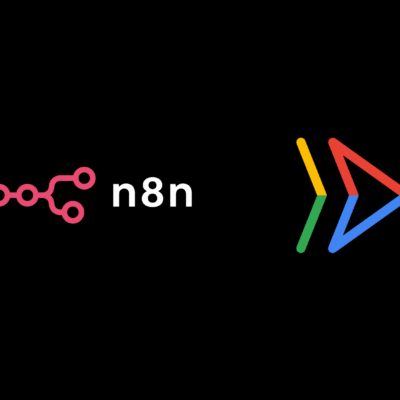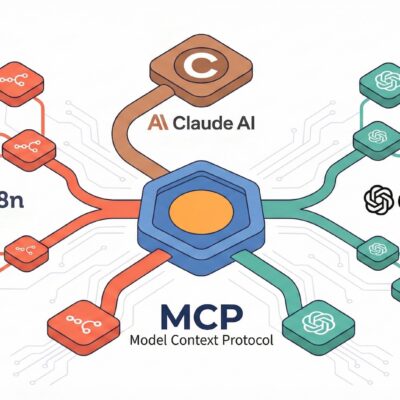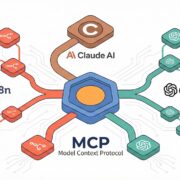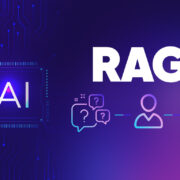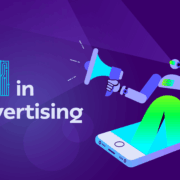The world of Artificial Intelligence is evolving at an unprecedented pace, creating immense opportunities for those who can bridge the gap between complex AI capabilities and real-world business needs. As an AI consultant, I’ve had the privilege of navigating this exciting landscape, and I recently achieved a significant milestone: generating $231,000 in revenue in just 30 days. This wasn’t a fluke from a single massive deal; it was the result of a deliberate strategy, combining various income streams tied back to the core principles of AI consulting.
In this article, I want to demystify what it takes to thrive in this field. I’ll share my journey, break down the two main paths you can take, and provide a clear, actionable framework, including a 30-day plan, for anyone looking to make a substantial impact as an AI consultant.
What Exactly is an AI Consultant?
At its heart, an AI consultant is someone who leverages their understanding of Artificial Intelligence to add significant value to a business or individual. This value typically manifests in two ways: saving time or making money. Whether it’s guiding a beginner through their first AI build or helping a multi-million-dollar enterprise optimize its operations, the core function remains the same: using specialized knowledge to achieve desired outcomes.
My own success wasn’t concentrated in one area. The $231,000 came from a blend of:
- Educational Content (B2C): My online communities and courses where I teach individuals how to build with AI and develop their own consulting mindset.
- Consulting Projects (B2B): Direct engagements with businesses through my agency, True Horizon AI, where we diagnose needs and design AI roadmaps.
- Implementation Work: Building and delivering custom AI systems for clients.
This mix highlights a crucial distinction: the Business-to-Consumer (B2C) and Business-to-Business (B2B) sides of AI consulting. Understanding these two distinct approaches is fundamental to charting your own course.
The Dual Powerhouse: B2C vs. B2B AI Consulting
Both B2C and B2B offer incredible potential, but they operate on different principles and cater to different client needs. I’ve found success in both, and while my recent surge in revenue was largely driven by the scalability of my B2C efforts, the B2B sector presents equally robust, albeit different, opportunities.
Path 1: B2C – Educating the Market and Building Authority
The B2C route involves teaching individuals, freelancers, and small business owners how to implement or sell AI solutions. This is where you can leverage content creation and community building to reach a wider audience.
Key characteristics of B2C AI consulting:
- Scalability: You can impact thousands of people simultaneously through courses, communities, YouTube channels, and digital products.
- Content-Driven: Success relies heavily on consistently producing valuable content that attracts and engages your target audience.
- Lower Ticket Price, Higher Volume: Individual products or services typically cost less, but you aim for a larger customer base.
- Building Authority: By sharing your knowledge, you quickly establish yourself as an expert, leading to more opportunities.
Many aspiring consultants might feel intimidated, thinking they need a massive following to succeed in B2C. However, that’s simply not true. People often prefer a high-touch experience or a niche community. I initially started my YouTube channel not as an expert, but as a learner documenting my journey with tools like N8N. Teaching others became the fastest way for me to solidify my own understanding, and this transparency built trust.
What people truly pay for in B2C education:
While there’s an abundance of free AI information available, people are willing to pay for:
- Shortcuts: A clear, guided path to achieving their goals faster.
- Clarity: Distilling complex concepts into easy-to-understand frameworks.
- Accountability: Support and feedback to keep them on track.
Essentially, you’re selling a faster path to success. This model is incredibly effective because it’s a “one-to-many” approach, builds authority rapidly, and can unlock opportunities like speaking engagements, direct consulting clients, and partnerships. My school communities, combining learning, accountability, and community, have been a primary revenue driver in this space.
Path 2: B2B – Delivering Direct Business Solutions
The B2B path involves working directly with companies to implement AI solutions, offering everything from strategic consulting to done-for-you automation and full-scale AI system deployments. This is where you roll up your sleeves and get hands-on with real business challenges.
Key characteristics of B2B AI consulting:
- High Ticket, Low Volume: You work with fewer clients but on much larger, higher-value projects.
- Problem-Solving Focus: You diagnose inefficiencies, design AI solutions, and help businesses execute.
- Value-Based Pricing: Projects can range from a few thousand to tens of thousands of dollars, anchored to the tangible value you add (e.g., 10x ROI within a year).
- Long-Term Partnerships: Successful projects often lead to ongoing retainers for continuous improvement and expansion within the company.
For example, a business might approach me with an inefficient sales process, losing leads due to slow follow-ups. My role would be to dissect their workflow, identify bottlenecks, and design an AI automation solution to drastically cut lead response times. This direct impact on their bottom line justifies a premium fee.
It’s worth noting that even in the B2B space, education remains a powerful lever. My team and I have been paid substantial amounts just to educate client teams – showing them how to use tools like ChatGPT effectively, setting up custom GPTs, or walking them through our AI audit processes. Many non-technical professionals are seeing significant success simply by teaching companies how to leverage basic AI tools to save hours and thousands of dollars. The key isn’t necessarily deep technical expertise, but rather being a few steps ahead and understanding how to solve a business owner’s problems.
My Journey: The Synergy Between B2C and B2B
Many people wonder which path to start with. The way I frame it is simple: Do you prioritize scale or simplicity?
- For Scale (B2C): If your goal is to build an audience, create leverage, and establish systems that grow even while you sleep, B2C is your path. However, it typically takes longer to build trust, grow a following, and create consistent content.
- For Simplicity and Immediate Cash Flow (B2B): If you’re looking for quicker wins and immediate income, start with B2B. You don’t need a massive audience; you just need to solve one business problem exceptionally well. A $3,000-$10,000 project can be closed in a week, providing immediate proof and cash flow. The trade-off is often less leverage initially compared to B2C.
My own journey started heavily on the B2B side. I worked directly with businesses, building systems and gaining invaluable client testimonials and proof of concept. This real-world experience became the foundation for my B2C content. As my B2C audience grew through YouTube and my communities, it began to feed directly back into my B2B pipeline.
These two paths aren’t competing; they form a powerful flywheel. Each one strengthens the other. While I’m currently focusing more on B2C for its scalability and broader impact, my agency continues to grow on the B2B side because both aspects complement each other so well. Don’t overthink it; start where you have the most momentum, and eventually, both paths will reinforce your overall success.
The 5-Step Framework for AI Consulting Success
Whether you choose B2C, B2B, or a combination, this framework provides a robust approach to building a thriving AI consulting practice.
1. Focus on Problems, Not Tools
This is arguably the most critical mindset shift. Don’t lead with the technology; lead with the pain point you can alleviate. Every business owner faces challenges: wasted time, lost money, or a lack of clarity. Your job is to identify these specific problems.
Sometimes, the best solution isn’t a complex, custom AI build. It might be an existing SaaS product, or a simple automation that doesn’t even use AI but removes an annoying manual task. That’s still immense value and leverage. Before building anything custom, ask: “What’s the real problem, what’s the simplest solution, and how can I provide value?” Thinking like a problem-solver, not just an AI automator, will unlock countless opportunities. My default is always: “How can we solve this with the minimum amount of AI possible?”
2. Learn One AI Leverage Tool Deeply
You don’t need to be an expert in every AI tool under the sun. In fact, you’ll go much further by selecting one powerful tool and mastering it. For me, that was N8N. I dedicated months to becoming proficient, to the point where I became “the N8N guy.” This depth of knowledge simplified everything – my content creation, my consulting engagements, and my client work.
Whether it’s N8N, Make, Zapier, Claude, or another platform, pick one and make it your signature. Be known as the person who can solve a specific problem using that particular tool. Depth builds authority, and authority creates opportunity. It’s why you pay a premium for a steak at a specialized steakhouse rather than a buffet.
3. Document Everything Publicly
This is your biggest multiplier. Don’t wait until you feel like a “perfect expert” to share. Document your learning journey as you go. Post your builds, share before-and-after results, talk about your learning curves, your failures, and your successes. This transparency makes you relatable and, more importantly, builds trust – the most valuable currency in any business.
Your public documentation becomes your portfolio, showcasing your expertise before you even speak to a potential client or student. It generates inbound opportunities, as people see your capabilities and reach out to you for help, rather than you having to cold outreach.
4. Craft Simple, Clear Offers
Avoid overcomplicating your service offerings. Your proposals should be straightforward, easy to understand, and easy for someone to say “yes” to.
- For B2C: “Learn how to automate your business using N8N.”
- For B2B: “We’ll automate three core workflows for your business for $X,” or “We’ll audit your sales process and identify exactly where AI can save you time and money.”
Simple offers sell faster because the value proposition is immediately clear to the potential client.
5. Overdeliver and Systematize
Every client or student engagement is an opportunity, not just for payment, but to build proof. When you consistently overdeliver, you generate testimonials, referrals, and compelling case studies. These, in turn, become powerful assets for attracting more clients, creating more content, and boosting your credibility. Each completed project adds to your digital resume, further building trust.
Once you start seeing consistent results, begin to systematize your processes. Streamline client onboarding, project delivery, and result reporting. The faster you can move from an idea to testing, receiving feedback, and implementing improvements, the quicker you’ll grow. In this rapidly evolving space, the quicker you fail, the quicker you learn, and the quicker you learn, the quicker you succeed.
Your 30-Day Action Plan to Become an AI Consultant
If you’re starting from scratch and want to build momentum quickly, here’s a practical 30-day plan to get your AI consulting business off the ground.
Days 1-3: Pick Your Niche
Start by choosing an industry where you either have existing knowledge or connections. Look for niches that are relatively simple to work with, have minimal heavy regulations, and are rife with repeatable manual tasks. Think industries like:
- Real Estate
- Coaching
- E-commerce
- Marketing Agencies
Avoid highly regulated sectors like healthcare or finance for your initial ventures.
Days 3-10: Conduct Thorough Market Research
Dedicate a week to deeply understanding your chosen niche. Dive into Reddit threads, explore LinkedIn posts, and use AI tools like ChatGPT to brainstorm potential pain points. Crucially, talk to actual people in that industry. Ask them about their daily repetitive tasks, their biggest bottlenecks, and what causes them frustration. Your goal is to speak their language and uncover three clear problems that AI or automation could significantly solve.
Days 10-15: Offer Free AI Automation Audits
Once you have a grasp of their pain points, start reaching out to businesses in your niche and offer free AI automation audits. This isn’t a sales pitch; it’s still about learning and primary market research. You’re providing free value, identifying inefficiencies, and demonstrating that you understand their operations better than they might. These free audits are your primary research, your foot in the door, and a powerful credibility builder.
Days 15-20: Turn Audits into Paid Clients
Naturally, some of the businesses you audit will ask, “Can you build this for us?” This is your opportunity to land your first paid project. Even if it’s just one or two clients, focus intensely on overdelivering. Your initial projects aren’t primarily about profit; they’re about gaining real-world experience, proof, and results that you can showcase.
Days 20-30: Overdeliver and Create Case Studies
Go all-in for these first clients. Meticulously track the “before and after” results: hours saved, revenue gained, costs reduced. Transform these achievements into compelling case studies and content. Share your results, your processes, and your key takeaways publicly. This content will attract more inbound leads as people recognize your expertise and want to replicate your success in their own businesses.
From this point, you’ll have the three critical ingredients for sustainable growth: proof, confidence, and momentum. With this solid foundation, you can then strategically scale your B2B consulting efforts or expand into B2C education to share your newfound knowledge. Remember, it all compounds.
Conclusion
The realm of AI consulting is ripe with opportunity for those willing to learn, adapt, and provide tangible value. Whether you gravitate towards the scalable, educational approach of B2C or the high-impact, direct solutions of B2B, the core principles remain consistent: leverage your AI knowledge to create significant value, focus on solving real problems, and continuously build trust and authority.
By embracing transparency, mastering a single powerful tool, and consistently overdelivering, you can build a robust AI consulting business that not only generates substantial income but also makes a meaningful impact. Don’t let indecision hold you back; choose a starting point, commit to the process, and watch as these two powerful paths begin to reinforce each other, accelerating your journey toward AI consulting mastery.

